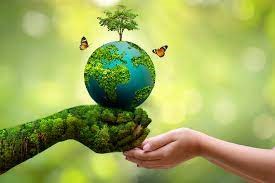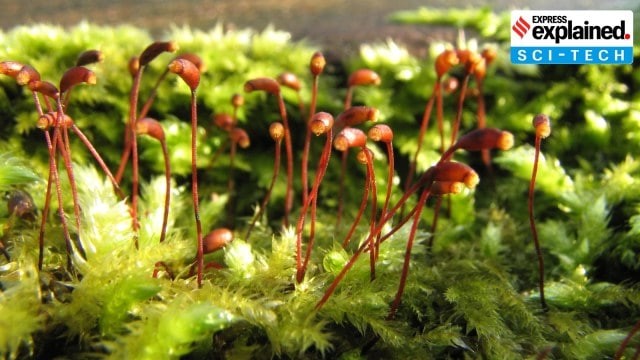Description

Disclaimer: Copyright infringement not intended.
Context
- World Environment Day is celebrated globally by millions of people every year on June 5.
- Since 1973, World Environment Day has been the largest global platform for environmental public awareness and discussions on the need to protect our environment, led by the United Nations Environment Programme (UNEP).
- Theme for 2023 is under ‘Beat Plastic Pollution’ campaign which is ‘Ecosystem Restoration'.
Need for celebrating World Environment Day
- There is an eminent threat of pollution, global warming which highlights that nature is in emergency mode and we are short of time.
- 3 billion tonnes of CO2 is released per year due to burning of fossil fuel contributing to existing pollution and problem of global warming.
- Globally there are extreme climatic conditions which threaten and have cascading effects to life and livelihood.
- Increasing global temperature is warming oceans and melting ice (glaciers, ice caps, and ice sheets) at a fast rate. It has adverse implications for coastal areas and islands. It may threaten the wellbeing of wetlands, may worsens flooding, and increase the salinity of estuaries.
- Within a decade air pollution is supposed to increase by 50 per cent beyond safe guidelines.
- More than 400 million tonnes of plastic is produced but only 10% is reused which means plastic waste will triple by 2040 and pose a threat to sustainability of aquatic ecosystems.
- Also micro plastic enters the food chain and pollutes every ecosystem.
- More than 2 billion people lack access to clean drinking water, this can be accentuated by climate change, pollution and population growth.
- In a decade spanning from 2002 to 2012, more than 2 million square kilometres of forests has been destroyed for fuel, agriculture and construction. It may led to loss of bio diversity, desertification and human-animal conflict.
- Celebrating World Environment Day help in mobilizing transformative action to save our planet and its sustainability.
|
Ecosystem
An ecosystem is a community of organisms and their physical environment interacting together.
It also refers to a geographic area where plants, animals, and other organisms, as well as weather and landscapes, work together to form a bubble of life.
Hence it is considered a system of various communities, their interactions (exchange of energy and recycling of the nutrients) and, the physical environment together.
|
|
United Nations Environment Programme (UNEP)
It is an international environmental authority of United Nations, which was established on 5th June 1972. It works to promote sustainable development within the United Nations system by inspiring, informing, and enabling nations and peoples.
It works with governments, civil society, the private sector and UN entities to address environmental challenges.
Some of its associated initiatives are UN75, World Environment Day, Wild for Life etc.
It is headquartered in Nairobi, Kenya.
|
.jpeg)
|
Environment
Environment is defined as sum total of all resources of this planet which includes all the biotic and abiotic factors that influence each other.
Biotic elements - All living elements for instance the birds, animals and plants, forests, fisheries etc. Abiotic elements – All other elements which include air, water, land, sunlight etc.
|
Measures to protect environment
- In Paris climate deal there is a consensus to keep temperature well below 2 °C above pre-industrial levels and push for Keeping it below 1.5°C this century.
- Reduce annual greenhouse gas emissions by 50% by 2030.
- Focus on renewable means of energy like solar power, wind power, Nuclear power, hydrogen fuel etc.
- Reduce waste by using resource judiciously and recycling whenever possible.
- Use of public transport should be promoted.
- Cloth bags, which can be reused, should be promoted instead of Plastic bags and responsibility of disposing such waste should be fixed.
- Mass afforestation program should be taken on an urgent basis.
- Keeping balance in developmental and environmental
Few other organizations working to protect Environment
The Intergovernmental Panel on Climate Change (IPCC)
- It was created in 1988 by the World Meteorological Organization (WMO) and the United Nations Environment Programme (UNEP).
- It is the United Nations body with an objective to provide governments at all levels with scientific information so that they can develop right environment policy.
- Information provided by IPCC includes the impacts of climate change and future risks.
- It also suggests options for adaptation and mitigation.
- It is Headquartered in Geneva, Switzerland.
The International Union for Conservation of Nature (IUCN)
- It is a membership consisting both government and civil society organisations.
- It was founded in 1948, and has a Headquarter in Gland, in Switzerland.
- It is considered the largest professional and most diverse environmental network to conserves nature and works to advance sustainable development.
- It publishes The IUCN Red List of Threatened Species.
|
PRACTICE QUESTION
In the light of growing concerns related to climate change, discuss the significance of organizations working to protect Environment and sustainable development. Analyze the efficacy of behavioural patterns in dealing with such challenges. (250 words)
|

Sources: https://www.thehindu.com/in-school/sh-science/WORLD-ENVIRONMENT-DAY/article14389974.ece












